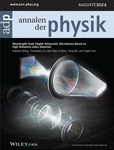Journal list menu
Export Citations
Download PDFs
Cover Picture
(Ann. Phys. 8/2024)
- First Published: 12 August 2024
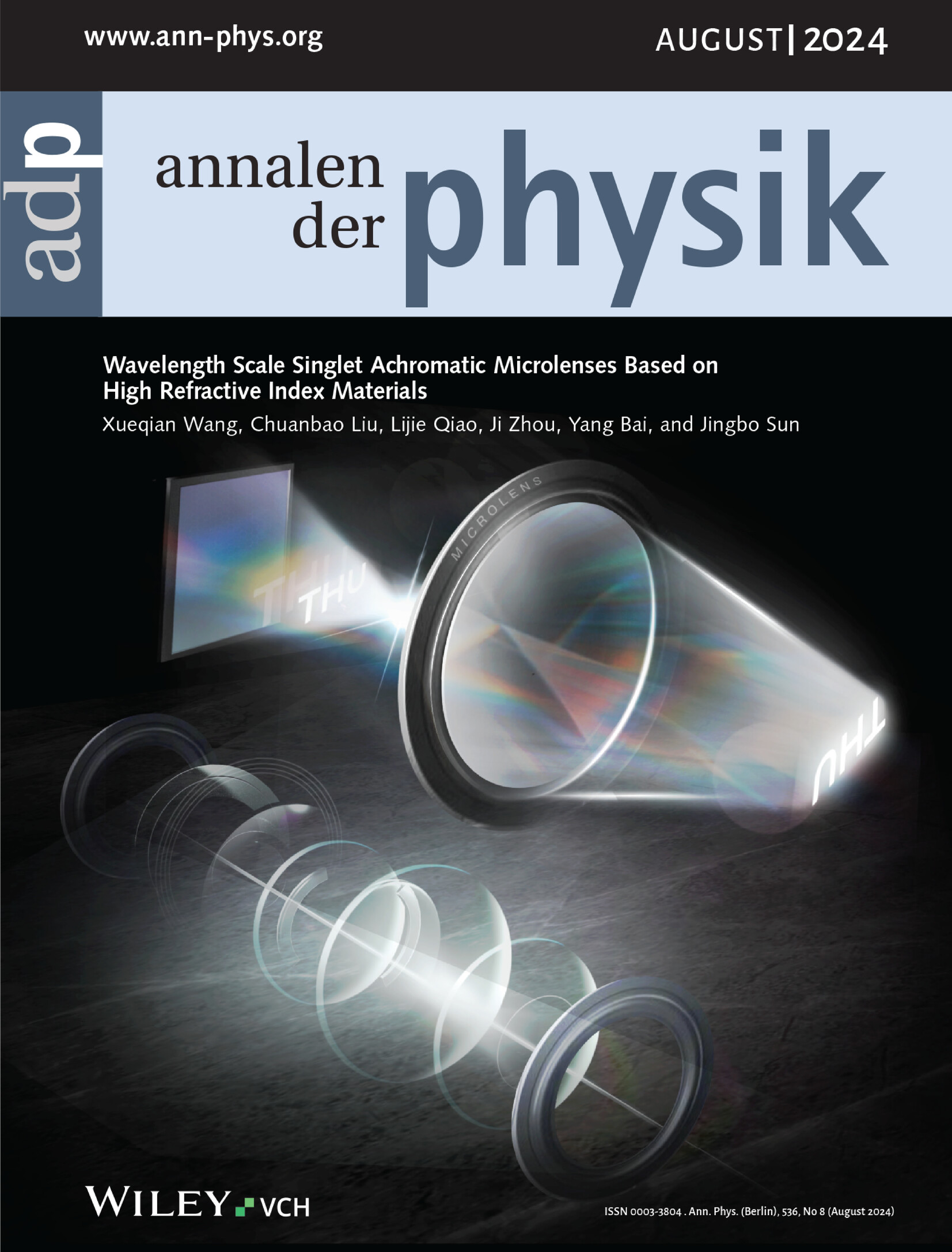
Wavelength-Scale Singlet Achromatic Microlens
A traditional lens is usually bulky and heavy for it is a combination of several designed lenses to correct the chromatic aberration. A metalens is based on the achromatic phase response of the nanostructures, which can exhibit an excellent achromatic performance in a wavelength-level thickness, however, relies on nano-fabrication. In article number 2300543, Yang Bai, Jingbo Sun, and co-workers propose a general design principle to develop a microlens with high-index materials with both the achromatic performance and a small thickness.
Back Cover
(Ann. Phys. 8/2024)
- First Published: 12 August 2024
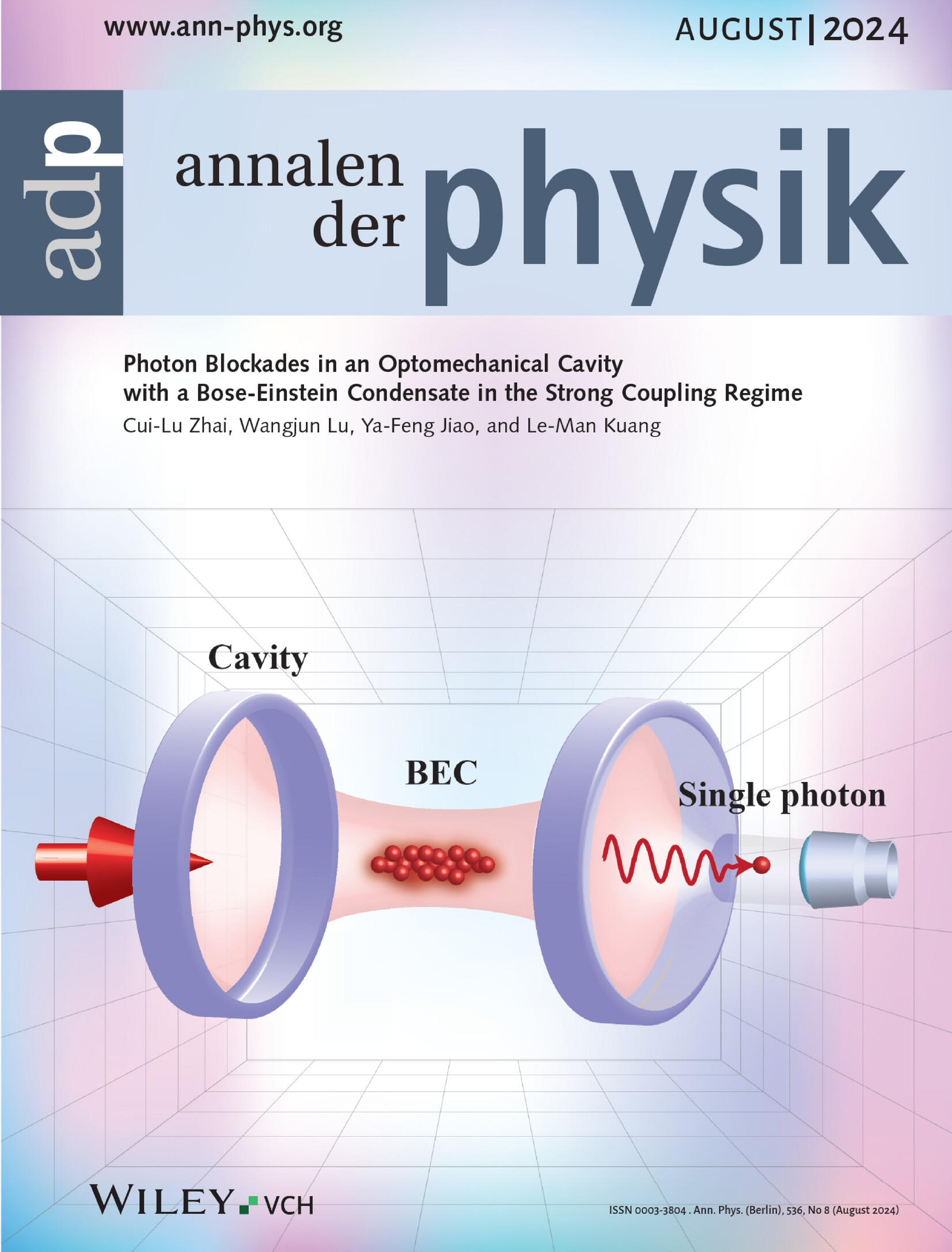
Photon Blockades in an Optomechanical Cavity
In article number 2300465, Le-Man Kuang and co-workers study the photon blockades in an optomechanical cavity with a BoseEinstein condensate. By tuning the interatomic scattering strength, a switch between single-photon blockade and photon-induced tunneling can be realized, and the enhancement of single-photon blockade can be achieved in both interatomic repulsion and attraction conditions. Moreover, the system can exhibit stronger single-photon blockade under the same optomechanical coupling than a conventional optomechanical system.
Masthead
Perspective
Then & Now
The Roles of Thomson and Rutherford in the Birth of Atomic Physics:The Interaction of Experiment and Theory
- First Published: 28 June 2024
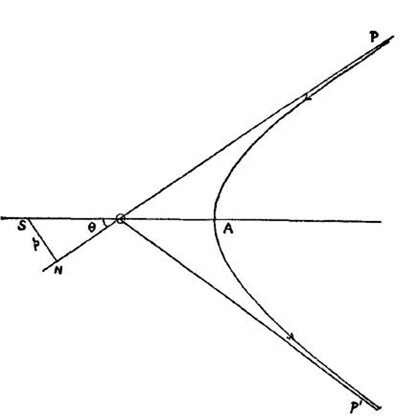
While the revolutionary discovery of the electron is the result of J. J. Thomson's classical propagation experiment, the discovery of the concentrated charge at the center of the atom is the outcome of E. Rutherford's scattering experiment. This technique has turned out to be the hallmark of experimental atomic physics.
Review
Advancements in the Use of Artificial Saturable Absorbers for Modelocking of 2 µm Ultrafast Fiber Lasers
- First Published: 17 June 2024
Research Article
Wavelength Scale Singlet Achromatic Microlenses Based on High Refractive Index Materials
- First Published: 06 March 2024
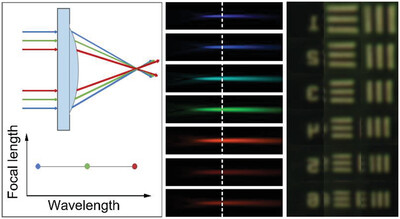
A method is proposed to achieve the singlet achromatic microlens of the wavelength-scale thickness by utilizing high refractive index materials with an aspherical profile. Accordingly, three materials with different degrees of refractive index and dispersion are selected to prepare achromatic microlenses. The results demonstrate all achieving achromatic limiting focus. Moreover, the thickness of the high-index microlens is only 573 nm, a reduction of ≈50% compared to the low-index microlens.
Photon Blockades in an Optomechanical Cavity with a Bose-Einstein Condensate in the Strong Coupling Regime
- First Published: 25 March 2024

This paper studies the photon blockades in an optomechanical cavity with a Bose-Einstein Condensate. By tuning interatomic scattering strength, the switch between single-photon blockade and photon-induced tunneling and the enhancement of single-photon blockade can be realized in interatomic repulsion or attraction conditions. Moreover, the system can exhibit the stronger 1PB under the same optomechanical coupling than conventional optomechanical system.
Tight Bounds from Multiple-Observable Entropic Uncertainty Relations
- First Published: 23 May 2024
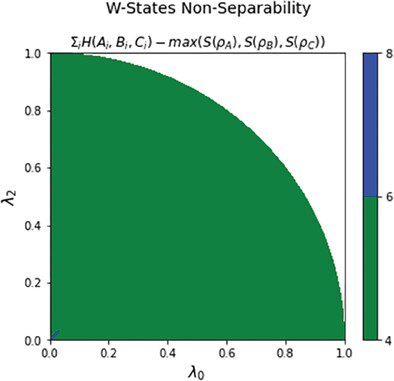
Entropic uncertainty relations (EURs) are inequalities that express preparation uncertainty as sums of Shannon entropies of probability distributions of measurement outcomes. The additivity properties of EURs for joint Shannon entropies of probabilities of local measurement outcomes with bipartite and multipartite systems and investigate the relation between uncertainty and quantum correlations is studied. Hence, new criteria for separability are found.
Multimodality Image Segmentation Embedded with Metasurface Encoder
- First Published: 23 May 2024
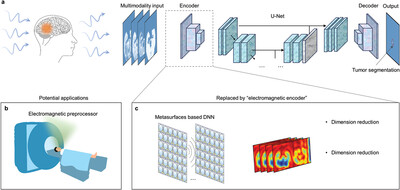
This article introduces a novel optoelectronic neural network utilizing a metasurface encoder for real-time multimodal brain image segmentation. The network dramatically enhances computing speed and reduces costs, employing multi-layer metasurfaces for pre-processing, optimizing image dimensionality and improving diagnostic processes for brain tumors.
Non-Hermitian Bonding and Electronic Reconfiguration of Ba2ScNbO6 and Ba2LuNbO6
- First Published: 30 May 2024
Entanglement Protection Using Weak Measurement in Non-Markovian Environment
- First Published: 09 June 2024
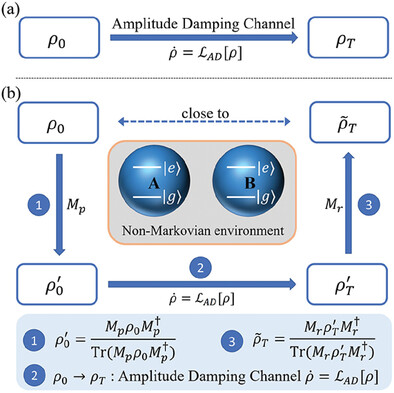
A weak-measurement-based entanglement protection is proposed in this article. Compared to directly sending the quantum state into the channel, the state is “pushed” close to a decoherence-free state by weak measurement to reduce the decoherence. After the channel, the initial state can be retrieved by another weak measurement.
Spectral and Transport Properties of Andreev Molecule Coupled to Majorana Wire
- First Published: 12 June 2024
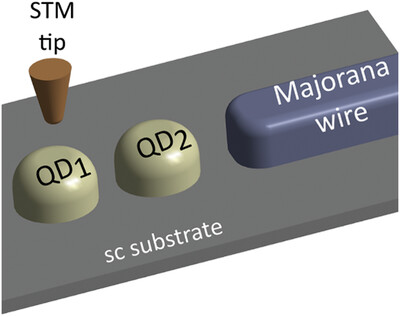
The coupling of an Andreev molecule to a topological superconducting nanowire, hosting Majorana quasiparticles at its ends, generates additional states in quantum dots. Transport measurements allow for the observation of the leakage of Majorana quasiparticles into the double dot system. Additionally, nonlocal pairing of electrons with parallel spins can be observed in the analyzed system.
Dynamics of Quantum Correlation in a Two-qutrit Heisenberg XXZ Model with Heitler-London and Dzyaloshinskii-Moriya Couplings
- First Published: 22 June 2024
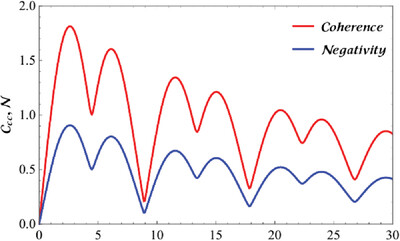
The intrinsic decoherence refers to the loss of quantum coherence between the superposed states of a system, usually induced by interactions with the external environment. This can cause quantum phenomena such as interference and superposition to disappear, leading to unpredictable evolution of the system.
Ab Initio Investigation of the Relativistic Effect in the Physical Properties of Intermetallic Superconductor with -Type Hexagonal Layer Structure
- First Published: 25 June 2024

TlBi2 is an intriguing superconductor with heavy elements for two main reasons. First, its high mass elements with 6p electrons suggest SOC could influence its physical properties. Second, it crystallizes in the hexagonal AlBi2-type layer structure, like MgB2, known for its high Tc. Various properties of TlBi2 are investigated using first-principles calculations based on density functional theory, with and without SOC.
Weak Force Sensing Based on Optical Parametric Amplification in a Cavity Optomechanical System Coupled in Series with Two Oscillators
- First Published: 26 May 2024
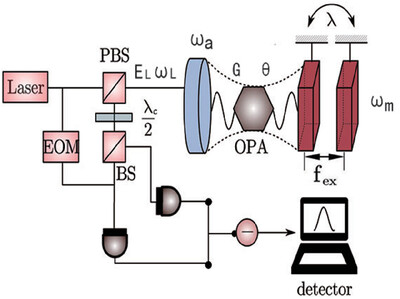
This study investigates a weak force sensing scheme in a cavity optomechanical system using a degenerate optical parametric amplifier (OPA) and an auxiliary oscillator to suppress quantum noise. It demonstrates that noise reduction in coupled oscillators relies on their normal mode splitting. Additionally, the OPA mechanism enhances cavity field squeezing and photon number fluctuation reduction. This new design offers insights into deeper applications of cavity field squeezing and auxiliary oscillators in force sensing.
Possibility of the Traversable Wormholes in the Galactic Halos within 4D Einstein–Gauss–Bonnet Gravity
- First Published: 02 July 2024
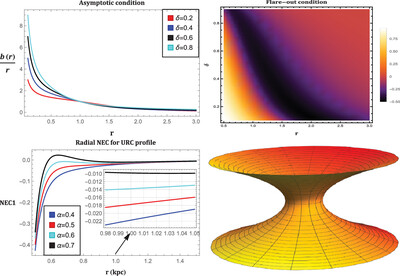
The geometry of wormholes in galactic halos due to dark matter has been explored using 4D EGB gravity. The images describe the behavior of these wormholes, which clearly meet the traversability conditions. The study confirms that the wormhole solutions obtained may exist in the galactic halos within the framework of 4D EGB gravity.




